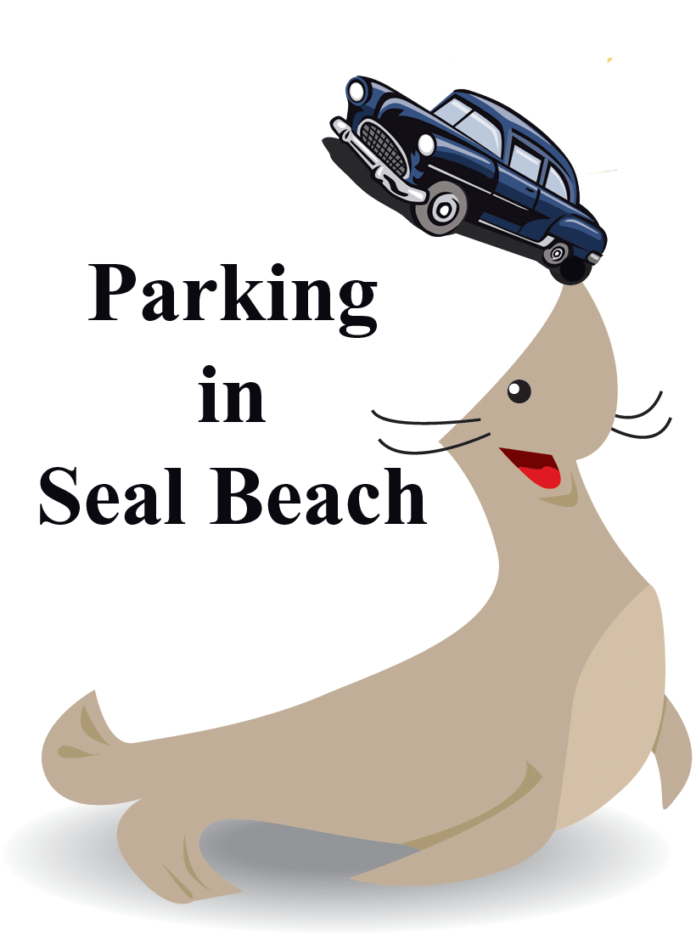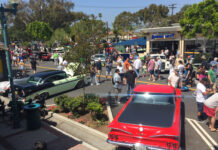No recommendation on paid parking yet. The Parking Committee is expected to address that issue at a future meeting.
On Monday, Dec. 5, the Parking Committee received a report on the finances of parking this week and unanimously agreed to some recommendations to the City Council about parking-related issues on Main Street. The meeting lasted about two hours and nine minutes.
However, the members of the Seal Beach Citizen-Council Parking Advisory Ad Hoc Committee have not yet made a recommendation on whether to keep free parking on Main Street or have paid parking on the street. (During the meeting, Chair Margo Wheeler pointed out that there is paid parking in the city’s lot on Main Street. Wheeler was appointed by District Five Councilman Nathan Steele.)
Final decisions about parking policy would have to be approved by the City Council. (And changes to parking rates in the Coastal Zone would have to be approved by the California Coastal Commission.)
The Parking Committee looked at the results of the parking survey on Wednesday, Nov. 29.
(For highlights from the survey, see here)
But first, a comment from the public.
Public comment
Only one person spoke during the public comment part of the meeting. Francis Orlando, a business owner who during the pandemic sold art.
Orlando opposed paid parking.
He said that he meets people from all over the world. He said people are surprised that a city like Seal Beach still exists. He said part of the character of the town is that there is free parking. Orlando said he hasn’t met anyone who wants paid parking.
As to raising revenue for the city, Orlando said “There’s got to be other ways.”
He said Leisure World residents won’t like using an app.
“Love Seal Beach; let’s hold on to it.”
Committee Member Bill McDannel applauded. McDannel was appointed to the Parking Committee by District Four Council Member Schelly Sustarsic. (Council members Sustarsic, Lisa Landau and Nathan Steele were in the audience Monday night, as they usually are during Parking Committee meetings. Only council members Joe Kalmick and Tom Moore sit on the Parking Committee.)
Recommendations
The parking committee recommendations included:
• Seal Beach should implement a wayfinding program. Staff presented the Parking Committee with a draft of a wayfinding proposal to direct people to beach parking. The slide presentation showed examples of signs directing drivers to places to park. The signage examples came from Newport Beach, Long Beach, and Santa Barbara. Dixon suggested signage with a seal’s nose or tail pointing the way. Dixon guesstimated the cost would be $100,000. However, she did not have a cost estimate.
In the same motion, the committee also recommended increasing secured bike parking on Main.
• Pay to stay. Seal Beach should charge drivers for parking for more than three hours. (Currently, there’s a two-hour limit to stay in a particular space on Main Street.) The proposed cost would be higher than the regular rate.
• A pilot program for loading zones for both commercial and passenger pick up at the discretion of the Seal Beach Police Department chief.
Parking discussion
The Parking Committee had a list of issues to look at. Parking Committee Chair Margo Wheeler said the committee would not get through all of those issues during the Dec. 4 meeting. The issues the Parking Committee did not resolve or did not get to will be addressed at a future committee meeting.
Parking consultant Julie Dixon said none of the options had been implemented, with the exception of commercial loading zones. She also said the no reparking ordinance is in place. Dixon recommended having one short term parking space on each block for drop offs and pick ups.
Wheeler wanted to know which options could be implemented even without paid parking on Main Street.
Wheeler said it wasn’t as simple as “do we have paid parking.” Wheeler said Seal Beach has paid parking in the lots, which is not premium parking, and free parking on Main Street which is not paid.
“Which is generally the opposite of how paid parking for downtown is handled,” Wheeler said.
“That’s how it’s supposed to be,” Dixon said.
She said, in other downtowns the street parking is free and in lots it is less expensive or free.
Committee Member Ken Husting (who was appointed by Council Member/Mayor Tom Moore) citied wayfinding as something that could be done. “Active loading? We can do that now,” Husting said. He also cited an Old Town shuttle, though he wasn’t sure it made financial sense.
(Later, City Manager Jill Ingram said the city had secured about 50% grant funding. She said that would be an item on next week’s City Council agenda.)
“Secured parking, we could do that now,” Husting said.
“There’s several things that we can do,” Husting said.
Dixon said she wanted to highlight one point about employee parking. “if you do not regulate the parking on Main Street in a different way, then there’s no burden or onus to the employees to participate in the program,” Dixon said.
Wheeler said the committee needed to go forward somewhere.
“It’s a good idea to separate what we could do regardless,” said Council Member Moore.
Dixon said if the city implemented a pay-to-stay option in the Main Street lot, that would create an issue with beach-goers. It is currently $10 a day to park in the beach lot.
She said the two-hour time limit is what keeps business owners and employees from parking on Main Street. “But you’re going to have to determine what that rate is,” Dixon said.
Dixon said employees said in the parking survey that employees don’t want to walk more than a block.
Later, Police Chief Michael Henderson said that the survey made it clear that convenience was a factor in parking.
Dixon said a voluntary program lasts about 45 days and then people go back to their old habits.
District One Council Member suggested going through the list of parking based on the suggestion that there would be paid parking.
Moore said it’s a waste of time if the committee votes no.
Kalmick suggested the parking issues would influence the vote on paid parking.
Moore, however, supported Wheeler’s suggestion that the Parking Committee look at the parking issues regardless of paid parking.
Moore wanted to talk about those meetings on Dec. 4 and discuss paid parking another night.
Husting said that would be a whole other meeting.
Wheeler said there was one council meeting in December and the next is in January. “But I think we need to get started,” Wheeler said.
Husting suggested going through the items that aren’t necessarily related to paid parking.
Later, Wheeler said that if the committee didn’t solve the employee parking issue, they weren’t going anywhere.
Options
The parking options discussed included:
• Employee parking.
• Whether to charge seasonal rates: weekdays versus weekends; and spring/summer versus fall/winter.
• Time limits: off street versus on street; a paid parking program (with a 20-minute free option for once-a-day; pay to stay for a longer period of time for a higher parking rate; and a no-re-parking ordinance that would be license-plate based. Dixon said in some cases you would double or even triple the rate for hour three or four. She said staff could do a revenue model for the next meeting.
Dixon said on-street parking is the premium parking and should be charged accordingly.
• Merchant validations. “It’s really up to the merchants,” Dixon said.
She explained that merchants can add time to a customer’s license plate number. She said merchants would buy parking “in bulk.” Husting said validation fizzled out in Westwood.
• Increasing secure bike parking locations on Main Street.
• An Old Town shuttle.
Parking Finances
According to Seal Beach Police Capt. Nick Nicholas, of the department’s Support Services Bureau, parking revenues and expenditures go through two city funds: the General Fund and the Tidelands Fund.
Staff displayed a slide giving the numbers for the funds.
In Fiscal Year 2021-22, the actual General Fund revenues were $2,017,076. The expenditures: $1,457,211. Surplus: $559,866. In FY 22-23, the actual General Fund revenues were $1,793,686. Expenditures: $1,811,287. Deficit: $17,602. The budget for 23-24 showed General Fund revenues projects (predicts) $2,385,100. Expenditures: $2,019,592.
Then there were the Tideland Fund numbers.
FY 21-22 actual Tideland Fund revenues were $1,397,767. Expenditures: $2,818,477. Deficit: $1,420,710. FY 22-23 actual Tideland Fund revenues were $1,519,905. Expenditures: $3,170,967. Deficit: $1,651,062. Budgeted FYI 23-24 Tideland Fund revenues are projected to be $1,658,300. Expenditures: $3,167,733. Deficit: $1,509,433.
He also spoke about long-term options such as a parking benefits district, a microtransit shuttle, and municipal valet service.












